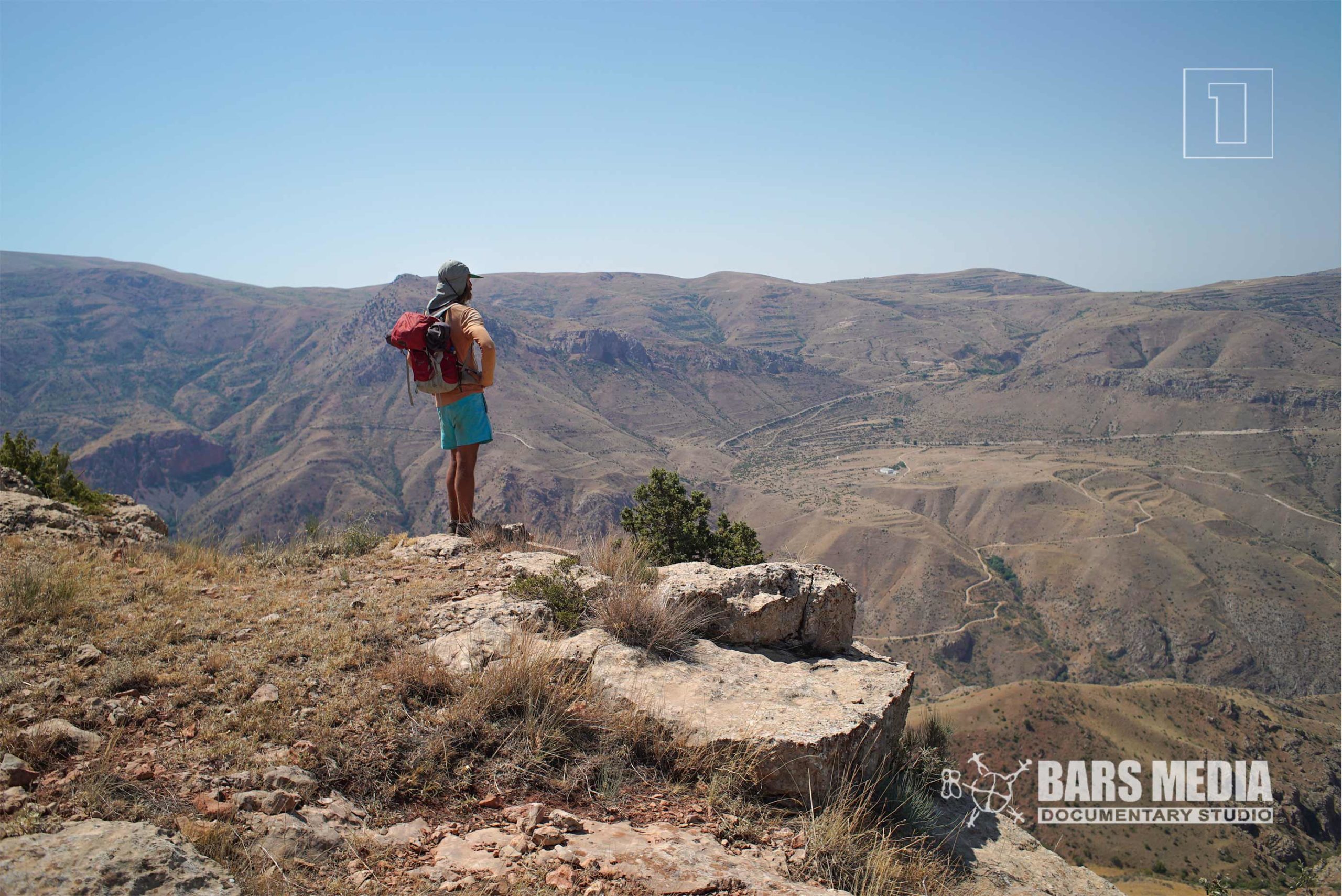The canyon was not what I expected: I’d heard stories of wading chest-deep in water through cramped high canyon walls, of flowing rivers and cascading waterfalls. But by the time I reached the canyon floor, summer was in full swing: the pools of water were knee high, stagnant, with a puke-green sludge growing on the surface. The rivers had turned into a gentle trickling stream, and the waterfall remained entirely in my imagination. The lifeless skeleton of a once-flourishing ecosystem remained, bleached white from the sun. The majority of my time was spent hopping from small rock to rock, pushing my way through overgrown shrubs, wading through putrid water, or walking through the white carpet of dead grasses lining the riverbed. At one point, failing to pay attention, I hopped just a centimeter away from a sunbathing snake. It didn’t move, and I thought the thing was dead, only to be scared back to life by the sudden movement of its head.
From that point on, I walked very slowly through the grey, yellow, brown and red rock walls of Hells Canyon. Reaching the end, I climbed up and out toward Tigranashen. Tired and hungry, I found a place to sleep near the highway, with the persistent rumble of freight trucks moving past me in the night on the way to a foreign border. I woke up the next day and picked fruit from the village orchards before heading north toward Shagap village; I had to climb Urtsadzor to get there so I fueled up with apples and several varieties of plums.
The beginning of the trek was pleasant, relieved from the strength of the heat beneath the shade of tall canyon walls. It then opened up into a steady climb to the peak, 2,000 meters with not a tree for shade in sight.
The Ararat region is empty of trees and lacking steady water, just yellow grasses—perfect for grazing livestock. The thyme that the mountain takes its name from had dried up, and with a sturdy crunch underfoot, the pleasant odor would waft up into the air, just a hint, before being blown with the wind. I summited, on my way back down the other side, I saw a church in the distance, and started heading towards it. I came across a temporary village, families of shepherds with blue tents, blue trucks, and blue boxes of bees. Coming close to ask about where to fill up my water, I stumbled upon a group of six or more women preparing lunch, loud and fast-talking, inviting me to join them. I helped with their preparations, making bread in an underground oven, slapping dough onto the warm oven walls.
The women were the real leaders of the group; there was one older man present but they wouldn’t let him talk, and he cowered behind the walls when I approached him. Me and the ladies took a picture together, and I chuckled, noticing that I had the longest hair in the group. The eldest grandma was cheerful; with glaucomic eyes and trembling fingers, she cracked bread and fed me. I noticed she had a faded tattoo on her right index finger—I was curious but didn’t ask, thinking it might be considered shameful. The ladies pointed me toward the next village and told me to talk to the beekeepers along the way. I found out those beekeepers were their husbands, just as gregarious as their wives. They were extracting honey by hand-cranked centrifuge, and gave me some. They then pointed me toward the village of Shagap, several kilometers under the sun, but at least the way was downhill.
I reached the village in the early afternoon, with plenty of time to set up camp, reflect and write in my journal, and fall asleep. (Actually, in the film I don’t sleep: from Shagap, I walk along the flat fields of golden wheat and green orchards until I reach Urtzadzor.)
Planning to head into the sparsely populated region of the Khosrov forest, I scout a small corner market to buy lavash and cheese, and get directions. The young girl behind the counter tells me there is an old castle before reaching the nature reserve, a place where I can set up my tent and sleep for the night. I only walk about a kilometer before a huge dump truck stops and offers me a ride; the driver is from Yerevan, and he is taking supplies to the water reservoir being built.
When we part ways, it’s only a short walk to reach the castle. There I meet a blonde tourist girl, walking along the walls of the ancient, newly renovated structure; she is from America, completing an internship for university credit, and as we introduce ourselves—her name is Chloe—I find it refreshing to speak English again. Together we explore the grounds and the tiny church inside. She’s adventurous, pleasant, with a bubbly personality, so I ask if she’d like to join me as I walk deeper into the private hunting grounds of a forgotten king—and to my surprise, she says yes. We talk through the night, exchanging stories and finding commonalities. Tomorrow, we head further north into a part of Armenia where few would go.
